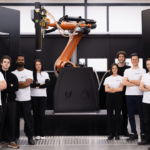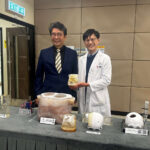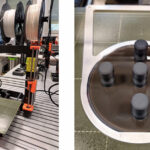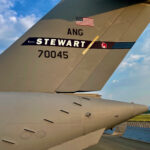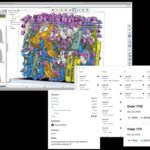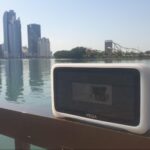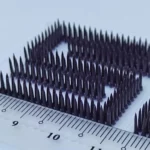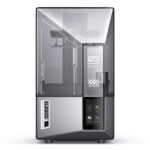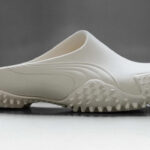Plastics have been a long-time favorite material of the food industry.
Plastics are cheap, easy to manufacture in large quantities, they are water-tight (good for keeping your university books protected from your soggy sandwiches) and easy to clean.

But those benefits remain true largely for moulded products which are in fact the majority of plastic items. If you want to achieve the same benefits using 3D printing, then we have a bunch of tips for you to help maintain the standards of your 3D prints at a food-grade level.
So how can we make a printed, layered part more alike to its monolithic moulded counterpart?
Three Aspects of Food Safe Plastics
According to the 3-A Sanitary Standards, there are three main areas which affect the food safety quality of plastic parts. These are, the design itself, the materials used, and finally the manufacturing process itself.
Design
When designing a food container or other plastic food item, consideration is given to whether the plastic item is a Product Contact Surface or a Non-Product Contact Surface. These descriptions are self-explanatory. The food is either in contact with the item, or it isn’t.
Naturally, food safety experts look at the surfaces in contact with the food.
As part of the design, the 3-A group recommend the following steps to ensure that a plastic part in contact with food is safe.
Free of Voids – Voids are common in 3D printed parts. From microscopic voids on the surface between filament tracks, to actual functional voids. In the case of process-induced voids such as those found in FFF prints, machining or coatings may be used to smooth/fill the surface. For functional voids, they are allowed but they must be easy to access for cleaning.
Smooth Corners – Sharp corners are hard to clean (they’re also ugly). Smooth those sharp corners away by turning them into fillets!
Robustness – Food-grade parts must be robust enough to withstand their intended application without breaking. Fractures in the part are voids, and so can provide a region for bacteria to form. Naturally, 3D printed parts (especially FFF parts) are anisotropic, and so can break easily in certain orientations. A 3D printed part should consider this as part of the design process and should strengthen these potential weak spots where possible.
Materials
Material selection should aim for using non-contaminating and non-toxic materials (for obvious reasons).
They should also be corrosion-resistant, smooth, non-porous, and non-absorbent.
Additionally, they should be sterilizable, meaning that they should be able to be cleaned to the point where all bacteria dies on the product. Note that just because something is sterilizable, it is not automatically food-safe. The other requirements should also be met.
Process
The process will determine the as-printed strength and surface finish of the part. FFF printers will generally produce a rough part while resin-based processes will produce smooth isotropic parts. Additionally if you have access to an SLS system, that can be used to create strong and smoother prints. The good news is, that all of these processes can be used to make food-safe plastics…as long as the parts satisfy the other requirements mentioned in this article.
So you know for sure that your process is capable of printing food-safe items…but what of the printer itself?
Yes, one must be wary of contaminants coming into contact with food contact surfaces directly fro the machine itself. For example, a brass extruder nozzle for a filament deposition device may contain lead for lubrication, or there may be other toxic lubricants deposited onto the part. For this reason, the machine itself should be using food-safe materials, especially when coming in contact with food surfaces.
Surfaces
One of the biggest aspects of manufacturing food safe plastics is related to the surface finish of the end product. Some printed parts tend to be porous (especially FFF & SLS). This is not good from a food hygiene perspective. Germs and all kinds of undesirable microbes can lurk in those nooks and crannies.
The surface is related to all aspects of the 3-A standards. That is, the design itself, the material and the process can all affect the surface finish. And the folks at 3-A Sanitary Standards have requirements for the surface finish also. Specifically, a food safe product must have a surface roughness of no more than 32 Ra.
To achieve this level of smoothness on a 3D printed part, traditional post-processing measures such as grinding, tumbling, machining, polishing and vapor smoothing can be employed to hit that required smoothness. Consideration to the entire design should be made from the offset to define a clear path to requirements. That PLA that we all know and love may be non-toxic (good for food), but try putting it onto a milling machine and see what happens. Material selection is of vital importance. A harder plastic may be more suitable in that case.
Of course there is another solution to the issue of surfaces: coating. Chemical coatings such as food-safe epoxy or polyurethane allow the filling in of pores and voids on the surface while providing a waterproof and rugged coating.
Just make sure that the chemical you use to coat it with is compatible with any cleaning products you plan to use on your product in future. No point having a nice smooth surface if the whole thing melts into a giant exothermic mess as soon as you try to wipe it clean with bleach!
Summary
Designing food-safe plastic products is a holistic process and the processes, materials, design and post-processing should be planned out in advance. The good news is, that with a little bit of careful planning, 3D printing can indeed be used to create food safe plastics.
You can read more about the 3-A requirements over at this link.


